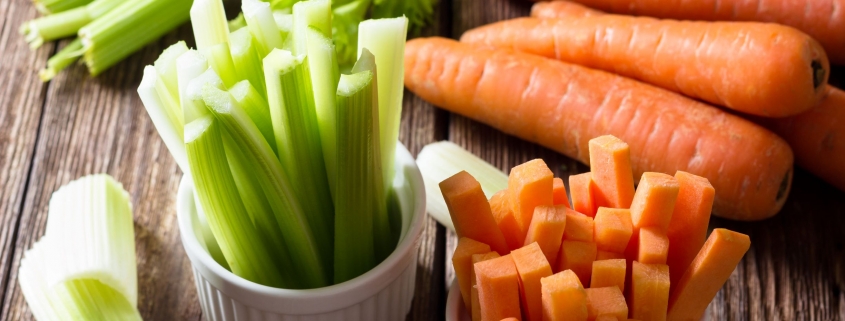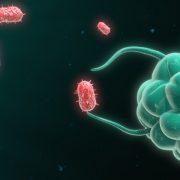8 Keys to Unlocking Smarter Snacking

Usually you can ignore the snack drawer. At a certain point in the day, though, those little treats start creeping into your mind. An hour later, the snacks summon you, pulling you closer like a tractor beam. When that happens, your best hope to avoid dietary disaster is learning smarter snacking concepts. That includes planning, learning how to snack smarter, and understanding what makes a snack healthy.
When you add up each of the eight key concepts below, you’ll have a base of practical knowledge about how to snack smarter. Follow along and you’ll start turning to healthy snacks in no time.
Smarter Snacking Has a Purpose
Purposeful action yields better results than an improvisational approach. Smarter snacking is no different. You don’t have to bounce from craving to craving.
Instead, learning how to snack smarter starts with your purpose for eating between meals. Consider your daily schedule to ascertain physical- and mental-energy needs. Is a snack required to prepare for a workout or recover after? Answering these kinds of questions lends purpose and direction to help you achieve smarter snacking.
Understand Your Snack Sensations
Part of identifying the purpose of snacking is examining your hunger. What’s making you want to eat? Are you hungry or is something else driving your urge—thirst, boredom, or an emotional response?
Thirst can easily be mistaken for the sensation of hunger. A glass of water may be all you need. If your craving is led by emotion or boredom, try an activity—walk, ride a bike, or do a home workout. After all that, if your body really needs calories or nutrition, focus on finding a healthy snack with skills you’ll learn below.
Think of Snacking as a Chance to Add More Nutrients
Once you grasp the purpose and understand your urge to eat, it’s time to think about what to snack on. The best advice starts not with a list of acceptable foods, but with a mentality to take into your smarter snacking.
Here it is: snacking is a nutritional opportunity, not just about satisfying a craving.
That means seeing your snack as a way take in more essential and beneficial nutrients. Use your snack to add fiber, plant-based fat, protein, specific micronutrients, prebiotics, probiotics, or water-rich foods to your daily diet. Start reframing snacking from chasing comforting flavors to gaining a nutritional leg-up.
How to Snack Smarter? Stay as Close to Whole Foods as Possible
Whole foods—especially fruits and vegetables—are key components of a healthy diet. Those same whole foods are also the bedrock of smarter snacking.
What makes a snack healthy can be as simple as its closeness to whole foods. An apple and some almonds? Those whole foods are absolutely healthy snacks. Spreading almond butter on apple slices instead is still good because you’ve stayed close to the original foods.
Seeing how far your snack has shifted from its whole-food origins can help you easily identify the healthy snacks to target.
Minimize Overly Processed Foods, Sugar, and Sodium
Stick close to whole foods helps avoid a lot of the pitfalls of overly processed snacks. But foods that are heavily processed often contain more fat, sugar, and sodium than you need—even though they’re convenient. And the calories these options pack also comes without much in the way of fiber or essential nutrients.
If whole foods aren’t available or easy to snack on—because ease is key when a snack attack happens—you can opt for minimally processed foods. Good options exist. You’ll recognize them by their simple ingredients and minimal sugar, low sodium, and no trans fats in the nutrition facts.
Fiber is the Friend of Smart Snackers
A simple and accurate answer to “what makes a snack healthy” could be one word—fiber. Whole fruits, vegetables, and grains have plenty of these key complex carbohydrates. And that fiber does so much for your body:
- Helps support satiety (feeling full for longer)
- Optimizes healthy digestion
- Acts as a prebiotic to support a healthy gut microbiome
- Plays a role in helping maintain heart health
There’s a lot more fiber benefits. But you already have an idea about the importance of including complex carb as part of your smarter snacking approach.
Keep Snacks in the Context of Your Daily Diet
Your body doesn’t recognize snacks as separate from your regular meals. Food is food. Snacks are digested and shipped to the body just like breakfast, lunch, or dinner.
Since there isn’t a special category for snack calories, you need to make sure they fit in your targeted calorie count for the day. Also pay attention to the amounts of macronutrients—fat, protein, and carbs—in your snacks.
Putting your snacks into your daily calorie and macronutrient counts keeps them in the right context—an important step when learning how to snack smarter.
Plan for Smarter Snacking Success by Budgeting
You know how many calories you need for your weight-management and lifestyle goals. (If you don’t there are resources to help.) And you already know you don’t want snacking to burst your caloric bubble.
That’s where you snack budget comes in. The concept piggybacks off of the advice above to put your snacks in the context of your full daily diet. It can help you plan out snacks before you hit the point where you’re ready to eat anything within reach. Proper planning—that’s easy to execute—will set you up for healthy, helpful snacking.
If you paid attention to the previous concepts, you won’t be surprised by the considerations for building a snack budget. Here’s what you should ask:
- How many calories are available to allocate to snacks throughout the day?
- What’s the amount of fiber, fat, and protein in the snacks compared to daily requirements or goals?
- How many times a day do feel like a purposeful, healthy snack could be useful?
- When is the best time to snack to optimize their impact?
With these answers, you’ll know your needs and you can start picking foods that fit into your daily budget. Making snacks part of your meal planning helps you scheme out your snacks for a week at a time, if you want.
Knowing How to Snack Smarter is Only Half the Battle
Turning what you’ve learned from these smarter snacking concepts into action is the next step. Fair warning: it can be a battle against your habits and cravings.
But you have the power to shift a potentially unhealthy habit into a powerful propellant toward your wellness goals. Start by understanding your needs, planning out your snacks, and identifying healthy options to reach for when cravings hit.
The last thing to remember is that—like developing any healthy habit—smarter snacking is a process. Don’t beat yourself up if a potato chip or two sneaks in now and then. Value the progress you make and you’ll learn to love eating healthy snacks.














